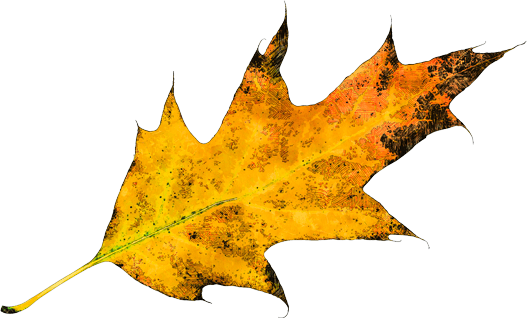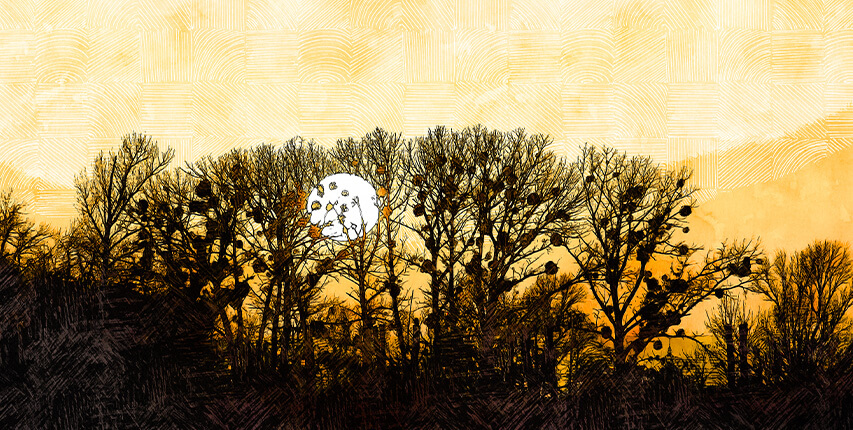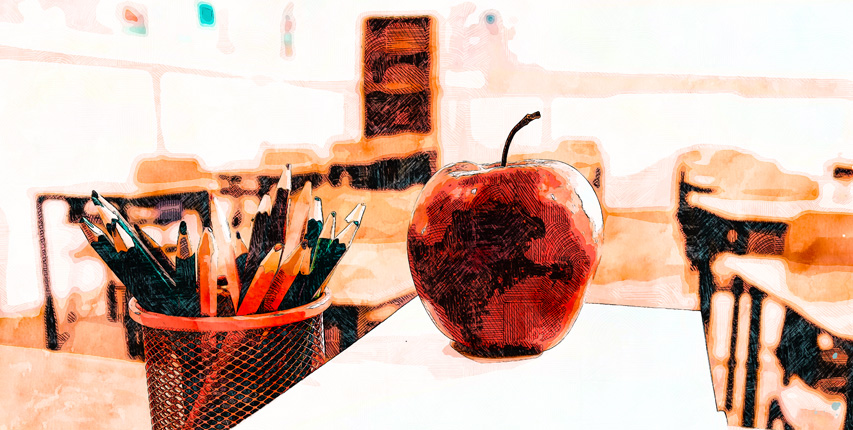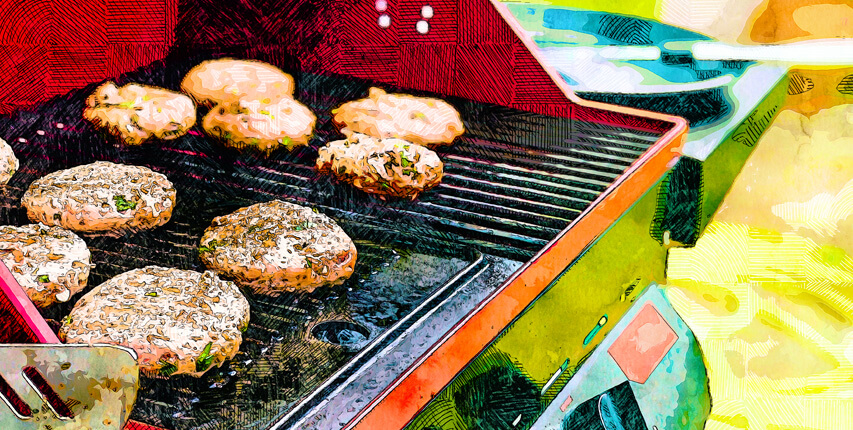Second Summer – The Warm Light Before the Fall
Before the crisp chill of autumn fully sets in, a strange and wonderful season lingers—a golden moment known as “Second Summer.” From weather quirks to age-old traditions, this post explores the curious charm of those lingering warm days, filled with late harvests, golden light, and one last splash of summer spirit. With fun facts, folklore, and trivia, it’s a sun-drenched look at the season’s final encore.
1.
When does Second Summer typically occur?
Between late September and early November, often after a cool snap or early frost.
It’s not tied to a specific date, but in the U.S., it often appears in mid-to-late October depending on the region. Think of it as summer’s brief encore performance.
Because it depends on early cold snaps and shifting weather patterns, Second Summer can change dramatically year to year—sometimes lasting a week or more, and sometimes barely noticeable.
Meteorologists might call it a “warm spell” rather than Second Summer, but the experience is the same: unexpectedly balmy days that make you second-guess putting your sandals away.
2.
Why does the weather warm up again after the first frost?
It’s caused by high pressure systems moving in after a cold front passes, bringing dry air and sunshine.
When a cold front rolls in, it often brings chilly air, wind, and even rain. But once it clears out, it’s sometimes followed by a ridge of high atmospheric pressure—a stable air mass that brings clear skies, dry air, and warmer temperatures.
High pressure suppresses cloud formation and allows the sun to warm the ground more efficiently during the day. Nights may still be crisp, but daytime temps can jump back into the 70s or even 80s°F, especially in areas that had an early frost.
It’s like the weather takes a deep breath—settling into calm, sunny conditions for a few days or even a week. That’s why Second Summer feels so magical: it comes just after we’ve started bracing for cold, and suddenly, the warmth returns—briefly, beautifully, and unexpectedly.
3.
What folklore is associated with this warm period?
In European traditions, this period is sometimes called:
St. Martin’s Summer in parts of Western Europe, tied to the feast of St. Martin on November 11.
Old Wives’ Summer in England.
Altweibersommer (“old women’s summer”) in Germany, a name linked to the delicate cobwebs seen drifting through the air—reminders of summer’s fading beauty.
These names are tied to saints’ days or old legends about the shift between seasons.
Long before meteorologists explained the phenomenon with cold fronts and high pressure systems, people noticed something curious: just when autumn seemed to be settling in, a stretch of warm, sunny days would return. In the U.S., this became widely known as “Indian Summer.”
In folklore, Second Summer is often romanticized as a final sigh of warmth—a reminder not to rush the seasons. It’s associated with harvest festivals, long golden evenings, and that gentle melancholy of knowing winter is just around the corner. Some even considered it a time of renewal or reflection, a brief moment to prepare for the dark months ahead.
Today, while the phrase “Indian Summer” is less commonly used due to cultural sensitivity, the sentiment behind the season remains the same: a fleeting return of warmth and light that feels almost magical.
4.
What makes Second Summer feel so special?
It’s the contrast—after chilly mornings and changing leaves, those sudden sunny afternoons feel like a secret gift.
In literature and film, this fleeting season often symbolizes nostalgia, reflection, or a last chance at something.
Writers and filmmakers use this short season as a metaphor—for aging, for missed opportunities, or for the sudden sweetness of a fading era. It’s the emotional equivalent of golden-hour light: beautiful, warm, and gone before you can truly hold onto it.
Culturally, it stands out because we expect cold in late fall—but when that heat returns, it’s a surprise. That surprise makes it feel precious, almost like nature is giving us a gift. It’s also tied to transitions: harvest into winter, freedom into hibernation, light into dark. It heightens awareness that everything is temporary—and beautiful because of it.
5.
Which U.S. region is most likely to experience a Second Summer?
The Midwest and Northeast
Second Summer (sometimes called Indian Summer) isn’t just a poetic idea — it’s a real weather pattern influenced by geography and seasonal pressure systems. While it can technically happen anywhere, some regions are far more likely to experience it.
Midwest & Northeast
These areas are classic Second Summer hotspots. After the first frost of fall, a high-pressure system can sweep in from the west or south, bringing clear skies and warm, dry air.
States like Ohio, Pennsylvania, New York, Illinois, and Michigan frequently report these unseasonably warm spells in mid-to-late October.
Appalachian & Mid-Atlantic regions
Places like Virginia, North Carolina, and Tennessee also enjoy these warm snaps, especially in valleys where temperatures can swing dramatically.
Great Plains
States like Kansas, Nebraska, and Missouri can experience significant shifts between chilly mornings and warm afternoons, with some of the longest-lasting Second Summer periods thanks to wide-open skies and dry air masses.
Pacific Northwest
While less common, warm October days after an early cold spell do happen here — but cloud cover and marine influence usually keep temperatures more moderate.
Mountain West
Areas like Colorado and Utah may see Second Summer conditions, especially in lower elevations, but they’re often brief due to early snow.
Second Summer thrives where cold fronts can be followed by dry, high-pressure systems—especially if there’s little cloud cover and light winds. These conditions are more common in continental interiors than in coastal or tropical regions.
.
6.
Why do farmers historically track Second Summer?
Because it allowed for a second round of harvest activities
In the 1800s, a warm spell after frost was a chance to finish harvesting late crops like corn and squash—or to repair fences and prep for winter.
For farmers in the 18th and 19th centuries, Second Summer offered a precious last chance to finish harvesting crops that hadn’t fully matured before the first frost.
Root vegetables like carrots, turnips, and beets were often still in the ground.
Corn drying and hay gathering could be completed without threat of immediate snow.
Fruit orchards (especially apples) could be picked during the dry spell without spoilage from damp or rot.
Warmer days gave farmers extra time to:
Reinforce barns and pens before winter.
Slaughter and cure meat, which needed dry, cool-but-not-freezing weather.
Move animals from summer pasture to winter shelter without risking exposure.
In essence, Second Summer was a bonus round of productivity—a gift of time, but also a subtle warning: Don’t be fooled—winter’s coming.
7.
What natural clues suggest Second Summer is coming?
Crisp mornings + light fog + warm afternoons
You might also notice spider webs catching dew or a sudden return of bees and butterflies. Nature briefly behaves like it’s late July again.
Before the warm days of Second Summer return, nature often offers quiet hints. One of the first is a sharp cold snap—the kind that brings the season’s first frost or causes leaves to suddenly change and fall. This chill marks a turning point, signaling that summer is truly over and setting the stage for a high-pressure system to move in.
After this initial dip in temperature, the weather often shifts dramatically. Skies clear, winds settle down, and the humidity drops. The sun, no longer battling dense moisture in the air, shines more brightly, making the days feel surprisingly warm and pleasant again. It’s a kind of weather that feels more like early fall—or even late summer—despite the bare branches and golden leaves.
Some people report seeing:
Insects like bees or butterflies reappearing for a few days
Birds pausing their migrations briefly
Squirrels extra active, taking advantage of easier conditions to finish gathering food
What makes Second Summer so striking is the contrast: the world around you looks like autumn, but the air feels like a throwback to warmer days. That sense of dissonance—between what you see and what you feel—adds to the nostalgic charm of the moment.
8.
What popular activities surge during Second Summer weekends?
Hiking, fall festivals, outdoor weddings, and one last lake or beach day
When Second Summer arrives, it feels like a golden-hour invitation to squeeze in a few more of the warm-weather moments you thought were behind you. Outdoor activities see a sudden revival—people head back to hiking trails, fire up their grills again, or plan one last camping trip before true autumn sets in. Parks and patios fill with those soaking up the sunshine, often with light jackets in hand just in case. It’s not uncommon to see boats back on lakes, kids playing outside after school, or spontaneous day trips as folks take advantage of the brief, beautiful weather window.
Gardeners also make the most of this seasonal encore. It’s a chance to tidy up, plant late-season crops, or enjoy the last blooms before frost sets in for good. Farmers’ markets may get a final boost in visitors, and fall festivals held during this time often see higher turnout thanks to the sunshine and crisp air.
Second Summer also brings a surge in photo-worthy moments—golden leaves under blue skies, soft morning light, and cozy outfits against summery backdrops. The contrast makes it a favorite time for photographers, artists, and anyone inspired by the visual poetry of the season. Whether it’s for recreation, tradition, or just nostalgia, people seem to instinctively sense the fleeting nature of this warm spell—and lean in.
9.
What’s the science behind the “golden” light of Second Summer?
The sun sits lower in the sky, scattering light in warmer tones
The signature glow of Second Summer isn’t just in your imagination—it’s rooted in science. As autumn approaches, the sun sits lower in the sky, even during midday. This lower angle means sunlight has to travel through more of Earth’s atmosphere before reaching us. Along the way, shorter wavelengths of light—like blue and violet—get scattered out. What’s left are the longer wavelengths: reds, oranges, and golds. The result is a warmer, more diffused light that casts a golden hue over everything, especially in the late afternoon.
Because the air tends to be drier during these high-pressure weather systems that cause Second Summer, there’s less humidity and fewer particles to dull the sunlight. This clarity enhances the richness of color and sharpens shadows, giving landscapes that dreamy, cinematic quality. It’s the same reason fall foliage looks especially vivid during this time—the golden light enhances the reds and oranges already on display in the trees.
Photographers often call this the “magic hour” of the year—not just because of the sun’s angle, but because the lighting is consistent and soft for much of the day, not just at sunrise or sunset. It’s the perfect natural filter—and one of the quiet reasons why this short season feels so nostalgic and special.
10.
Why do gnats come back during Second Summer?
These tiny pests thrive in humid, slow-moving air. During Second Summer’s warm spell, especially in low-lying or coastal areas, conditions become ideal for a brief but noticeable resurgence.
Gnats—especially the tiny biting midges often called “no-see-ums” in the South—are incredibly sensitive to changes in air pressure, temperature, and humidity. In coastal and low-lying regions like southern Georgia and the South Carolina Lowcountry, the warm, humid lull that follows a fall cold front can create the perfect storm for gnat resurgence.
During Second Summer, high pressure moves in after cooler weather, bringing calm winds, higher temps, and a spike in humidity. This lack of breeze is exactly what gnats love—they’re weak fliers and thrive in still air. Combine that with moist conditions near marshes, rivers, or wooded areas, and you get a sudden (and annoying) burst of gnat activity, even after you thought bug season was over.
It’s not long-lasting—once the true fall chill sets in, they usually vanish—but it’s enough to catch Southerners off guard. In some places, locals even joke that if the gnats are back, Second Summer has officially arrived.
11.
Why does Second Summer make allergy season last longer?
The extra warmth and dry air can kick pollen back into circulation, extending allergy season well into what should be the start of cooler weather in the Southeast.
In the Southeast, ragweed is one of the biggest culprits of fall allergies, and its pollen peaks in late August through October. Normally, cooler, wetter fall weather starts to tamp things down. But during Second Summer, the return of heat and dry air acts like a giant leaf blower for pollen—stirring it back up into the atmosphere and keeping it circulating.
This dry spell also dries out soil and leaves, creating dust and airborne mold particles that irritate sinuses further. Add in stagnant air from high-pressure systems, and you get fewer breezes to clear the air—leaving allergens hovering near the ground, where they’re easily breathed in.
So even though the calendar says “fall,” your nose might still say “summer.”
12.
Why does Second Summer feel hotter after a hurricane?
After a hurricane passes, a high-pressure system often settles in behind it, clearing out clouds and bringing unseasonable warmth for days or even weeks.
In the Southeastern U.S., Second Summer often arrives on the heels of a hurricane—not in spite of it, but because of it.
When a tropical storm or hurricane moves through, it typically pulls in a massive amount of moisture and unstable air. But once the storm passes, the atmosphere shifts. A high-pressure system frequently follows in its wake—sort of like a lid sealing the pot. This system suppresses cloud formation, stabilizes the air, and brings clear skies, sunshine, and a spike in temperatures.
That post-storm high pressure acts as a reset button for the weather. Humidity can drop, the sun returns in full force, and afternoons feel oddly hot for the season—especially after the first hints of fall have arrived. This sudden flip from stormy skies to warm, dry air is classic Second Summer behavior, and it’s part of why the timing varies from year to year.
In coastal regions like Georgia and the Carolinas, where hurricane season runs through November 30, it’s not uncommon for this warm spell to appear in September or October after a big storm clears out. Locals often recognize it as a “calm after the storm” heatwave—one that stretches out the summer feeling just a little longer.
13.
Why do farmers time the sweet potato harvest with Second Summer?
Sweet potatoes need warm soil and dry conditions to cure properly. Farmers in Georgia and the Carolinas often rely on Second Summer to finish pulling in the crop before colder weather sets in.
In the Southeast, sweet potatoes aren’t just a fall favorite; they’re a crop that depends on very specific conditions to harvest and cure properly.
Sweet potatoes are usually dug up in late September through October, right when Second Summer tends to show up. That post-frost warm spell offers exactly what farmers need: sunny skies, dry air, and warm soil temperatures.
Why does this matter? Sweet potatoes are sensitive after harvest. If the ground is too wet or cool, the roots can bruise, rot, or cure poorly. But during Second Summer, when the afternoons still feel like summer and rainfall is minimal, the soil stays loose and dry—ideal for pulling the tubers without damage.
After harvest, the curing process begins: the potatoes are stored in warm, humid conditions for a week or two to toughen their skins and develop flavor. That initial warmth is crucial, and the lingering heat of Second Summer helps kickstart the process before colder fall temperatures arrive.
In short: Second Summer gives farmers a narrow, golden window to wrap up harvest season and ensure their sweet potatoes are ready for storage—and the Thanksgiving table.
14.
Why does Second Summer start earlier in the South?
As the first cold fronts move through and high pressure builds behind them, the Southeast often gets an early return to summerlike warmth before fall fully arrives.
In the Southeast, Second Summer is driven by a familiar atmospheric pattern. As we move into early fall, cold fronts begin sweeping down from the north, bringing brief drops in temperature. But just behind those fronts, high-pressure systems often settle in—pushing out clouds and pulling in dry, stable air.
This high pressure acts like a weather dome, blocking new storms and allowing clear skies and abundant sunshine to return. With less humidity and little wind, daytime temperatures can bounce back into the 80s or even 90s, especially in low-lying areas like Georgia’s Piedmont or South Carolina’s Midlands.
The result? A stretch of days that feel more like August than October—even though the calendar says otherwise. Mornings may be crisp, but afternoons can get downright hot. It’s this meteorological one-two punch—a cold front followed by calm, sunny weather—that creates the fleeting but familiar Second Summer in the South.
Test Your Knowledge!
Second Summer Trivia
A fun, fast-paced quiz to test and see what you can recall about the fun facts above! Try quick mode for a fast challenge or take the full quiz to see how much you really know!



